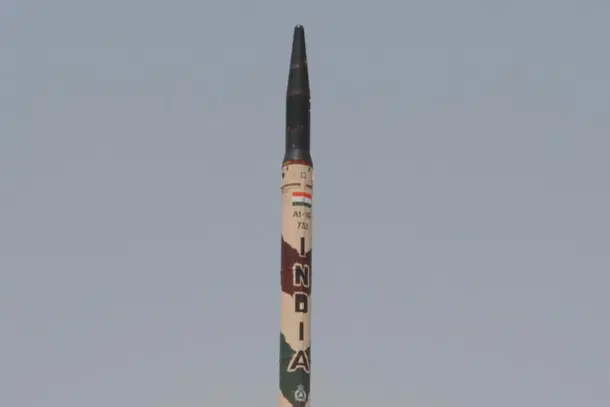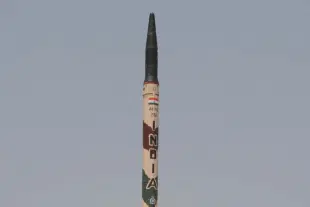News Brief
India Advances Nuclear And Air Defence Strength With Successful Test-Firings of Key Missile Systems—All About It
Arzoo Yadav
Jul 18, 2025, 12:39 PM | Updated 01:12 PM IST
Save & read from anywhere!
Bookmark stories for easy access on any device or the Swarajya app.


In a significant show of military strength, India test-fired three major missile systems within 24 hours, strengthening its nuclear and air defence capabilities, reported India Today.
The Indian Army successfully launched the upgraded Akash Prime missile on 16 July from Ladakh at an altitude of over 4,500 metres.
The system intercepted two high-speed drones, showcasing its performance in extreme conditions with low oxygen and high winds.
Akash Prime, developed by the Defence Research and Development Organisation (DRDO), features an indigenous Radio Frequency Seeker for precise tracking and guidance.
It can engage targets such as fighter jets, drones, and cruise missiles within a 30–35 km range and up to 20 km in altitude.
Its integrated system includes the Rajendra radar, command-control unit, and missile launcher.
The test was conducted as part of the ‘First of Production Model Firing Trial’ to speed up its deployment in high-altitude border areas.
The DRDO, Bharat Dynamics Limited, Bharat Electronics Limited, and private defence firms jointly participated in the trials.
On 17 July, the Strategic Forces Command supervised the successful test-firing of the Prithvi-II and Agni-I ballistic missiles from the Integrated Test Range, Chandipur, Odisha.
Both missiles met all technical and operational standards.
Prithvi-II, a liquid-fuelled missile, can strike targets up to 350 km with high accuracy, while Agni-I, powered by solid fuel, has a range of 700 km.
These missiles are key to India’s nuclear deterrence strategy and enhance its combat readiness.




